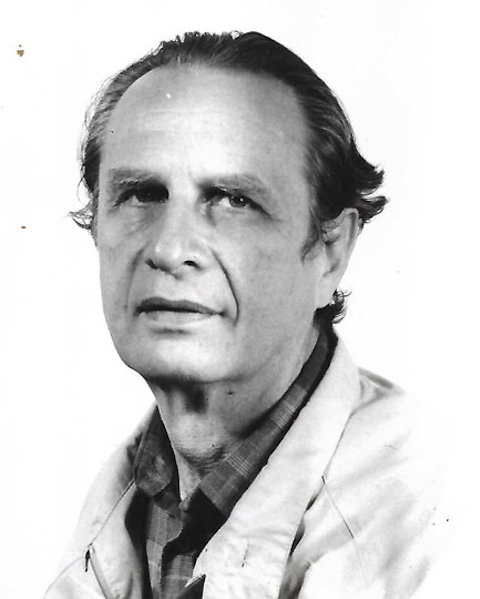Alex Grossmann 1930-2019 distinguished Croatian-French mathematician a founder of Wavelet Theory
http://www.croatia.org/crown/articles/11298/1/Alex-Grossmann-1930-2019-distinguished-Croatian-French-mathematician-a-founder-of-Wavelet-Theory.html
By Nenad N. Bach and Darko Žubrinić
Published on 05/14/2021
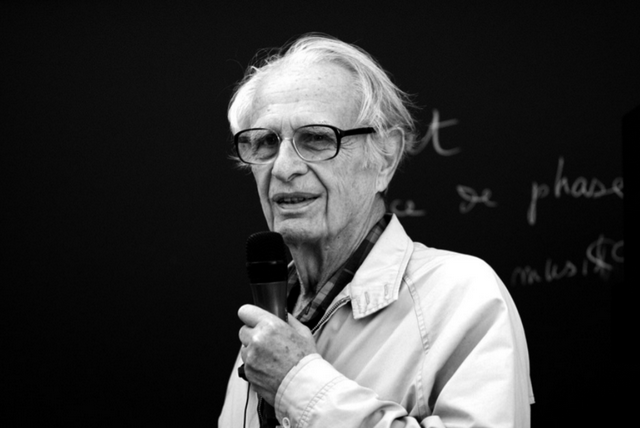



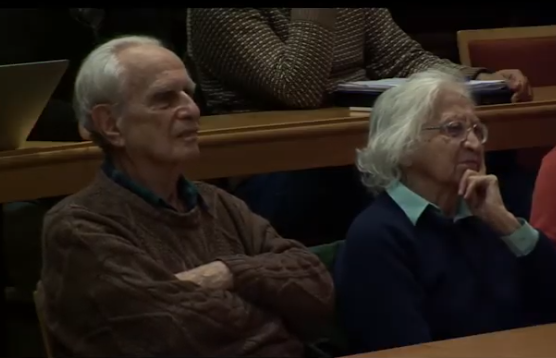
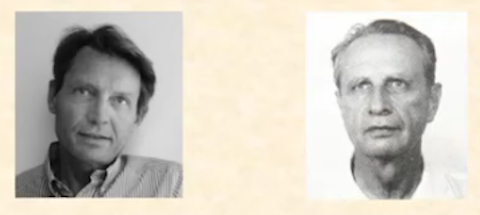
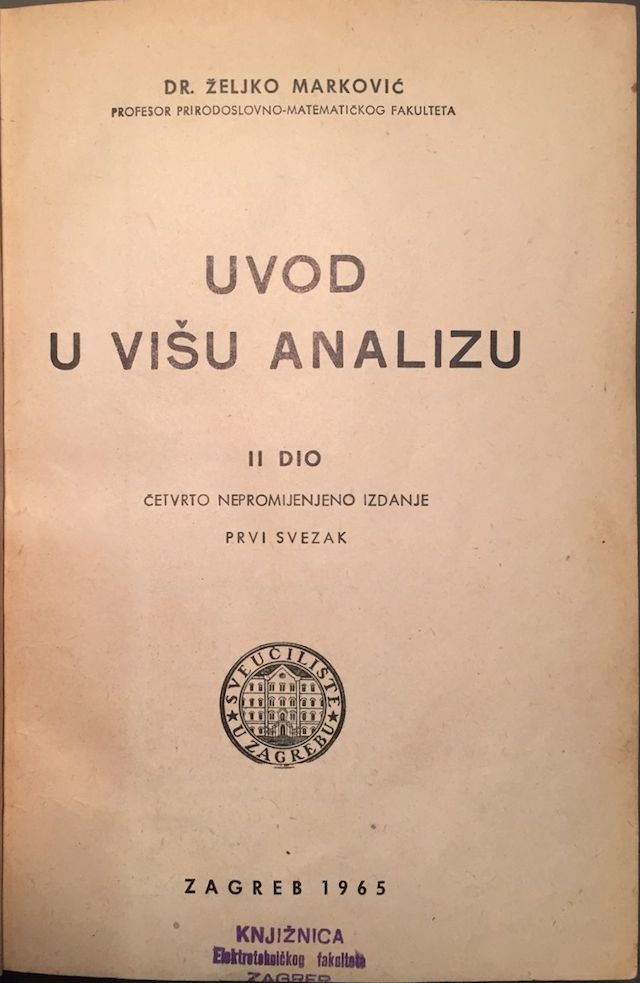
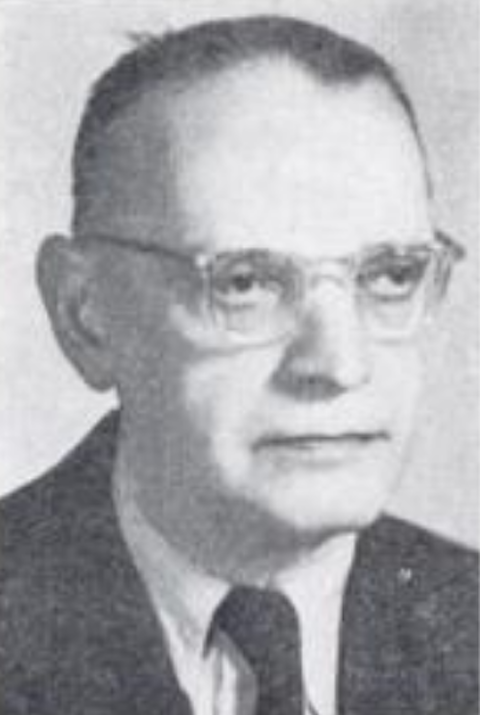


 | Alex Grossmann (Alexander, Alexandre) was born in the city of Zagreb, where he completed his studies of Physics at the University of Zagreb, and earned his PhD in 1955, at that time employed at the Ruđer Bošković Institute in Croatia's capital. He spent the period between 1955 and 1965 in the USA, working among others at the Insitutute of Advanced Study, Princeton, and at the Courant Insitutue of Mathematics, NY. Since 1965 he was employed at the University of Marseille in France. This Croatian-French mathematician is considered as a father of Wavelet Theory, due to his groundbreaking joint work with French geophysicist Jean Morlet in 1984. He was a thesis advisor to distinguished Belgian physicist and mathematician Ingrid Daubechies. |
Born in Croatia's capital Zagreb, studied Physics and earned his PhD at the University of Zagreb in 1955

PhD student Professor Ingrid Daubechies, who is also one of the founders of Wavelet Theory.
| Summary. Alex Grossmann (Alexander, Alexandre) was born in the city of Zagreb, where he completed his studies of Physics at the University of Zagreb, and earned his PhD in 1955, at that time employed at the Ruđer Bošković Institute in Croatia's capital. He spent the period between 1955 and 1965 in the USA, working among others at the Insitutute of Advanced Study, Princeton, and at the Courant Insitutue of Mathematics, NY. Since 1965 he was employed at the University of Marseille in France. This Croatian-French mathematician is considered as a father of Wavelet Theory, due to his groundbreaking joint work with French geophysicist Jean Morlet in 1984. He was a thesis advisor to distinguished Belgian physicist and mathematician Ingrid Daubechies. |
| Alex Grossmann (1930-2019) Born in 1930 in Croatia's capital Zagreb, Alex Grossmann completed his study of Physics at the University of Zagreb in 1952, and earned his PhD in Physics in 1955 at the Ruđer Bošković Institute. Both his diploma work and PhD were completed under Ivan Supek. (Supek completed his PhD under Werner Heisenberg in 1940 in Leipzig, Germany.) Grossmann was employed as an assistant at the Institute of Physics in Zagreb (as well as then young Gaja Alaga and Vladimir Glaser, distinguished Croatian physicists). 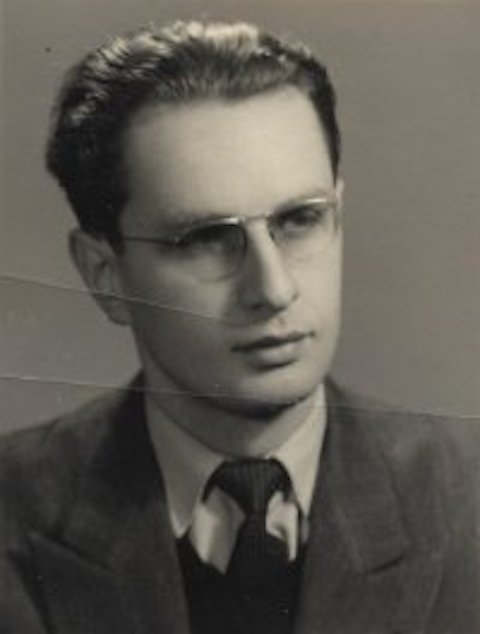 Alex Grossmann in 1950, when he was a student of Physics at the University of Zagreb. Photo from Centre de Physique Theorique, Marseille. Then he moved to the United States, where he was employed at the Brandeis University near Boston, at the New York University (Courant Institute of Mathematical Sciences), and at the Institute of Advanced Studies in Princeton, until 1964. After his one-year sojourn at IHES (Institute des Hautes Etudes Scientifiques) in Bures-sur-Yvette in France, at the request of Daniel Kastler he started his very fruitful work at the University of Marseille in 1966, in the fields of Mathematical Physics and Wavelet Theory.  Alex Grossman in 1978. Photo from Centre de Physique Theorique, Marseille. 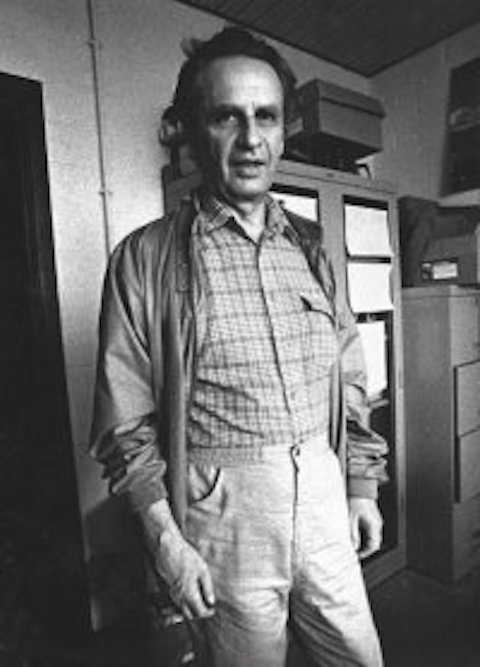 Alex Grossmann in 1980. Photo from Centre de Physique Theorique, Marseille. In 1980, he started his important collaboration with French geophysicist Jean Morlet, which has resulted in laying down the mathematical foundations of Wavelet Theory in 1984. Their work is cited in enormously many papers and books, covering practically all scientific areas imaginable (see the above link). In 2020 only, their joint work (published 36 years earlier in SIAM Journal of Mathematical Analysis) was cited in nearly 120 references! (Here, SIAM = Society for Industrial and Applied Mathematics.) The overall number of citations until May 2021 for this paper only was 1990 (information by ac. Andrej Dujella, based on the Web of Science). 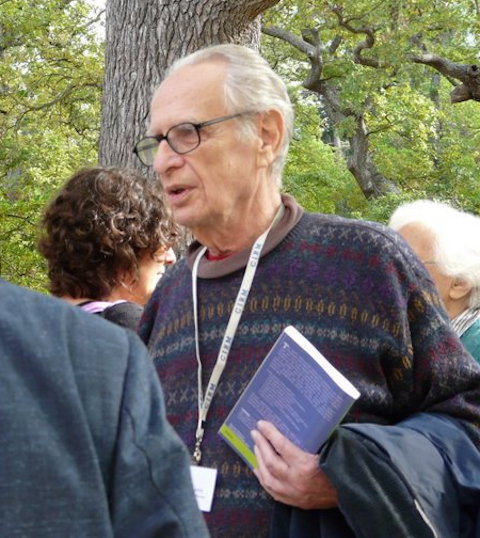 Alex Grossmann at a conference. Photo from Centre de Physique Theorique, Marseille. In 1986, Alex Grossmann founded and directed international Wavelet Research Group (in French, GDR "Ondelettes"). 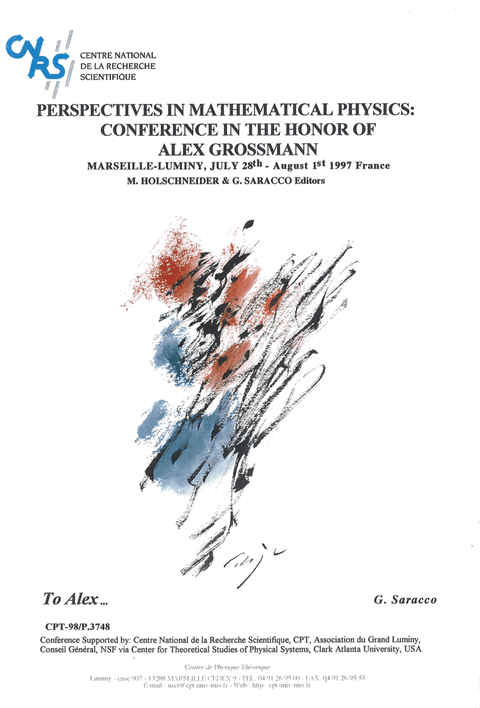 In 1997, an international conference was organized by the Center of Theoretical Physics in Marseille in his honor: Perspectives in Mathematical Physics: Conference in honor of Alex Grossmann; see [PDF]. In 1997, Alex Grossman obtained a Special Prize (Prix Special) from the French Physical Society. Since 1993, his interests were oriented towards Mathematical Biology (genome problems and interplay with Computer Science). In 2000, he delivered a plenary lecture at the 2nd Congress of Croatian Mathematicians in his native city of Zagreb, upon the invitation of Professor Hrvoje Šikić. The title of his talk was "Comparisons of biological sequences: some tools from linear algebra." Grossmann was a member of Advisory Board of Glasnik matematički (published by Croatian Mathematical Society in Zagreb) in the period of 2002-2006 In 2009, Alex Grossmann was elected a member of Academia Europea, in section Physics and Engineering Sciences. His research area was indicated as Mathematical Physics. In 2019, an international conference was organized in Orsay near Paris, in honor of Alex Grossmann and Yves Meyer: Wavelets and Beyond - A celebration for Alexandre Grossmann and Yves Meyer. Alex Grossman's father was Jewish (Maks Grossmann, distinguished Croatian medical expert), and his mother was Croatian (Marija Ivana Horvat; her father was Aleksandar Horvat, and it seems that his name was given to her son with Maks). |

Alex Grossmann with Jean Morlet in 1991
Photo from Centre de Physique Theorique, Marseille.

Professor Alex Grossmann. Photo from
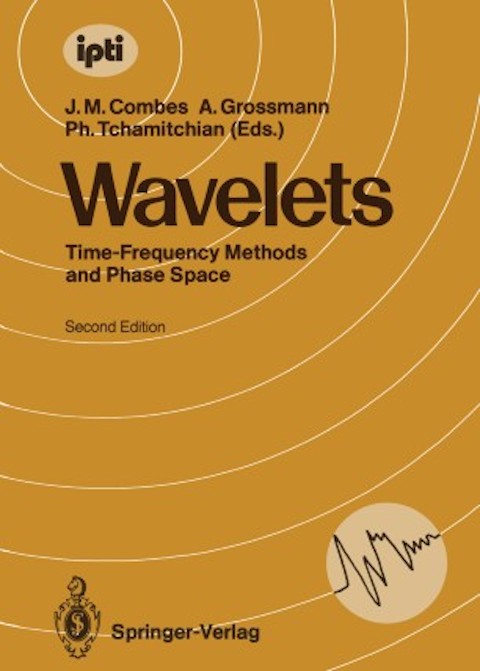 Wavelets, published by Springer-Verlag, based on the conference organized in Marseille in 1987. A wide range of mathematical contributions of Alex Grossmann can be grouped into the following three main areas:
A result of his work at the Center of Theoretical Physics in Marseille (CPT - Centre de Physique Theorique) is that the logo of CPT was chosen to be dedicated to wavelets, an area in which this institution became universally recognizable:  Ingrid Daubechies, distinguished Belgian physicist and mathematician, one of the founders of Wavelet Theory, delivered a lecture in 2020 dedicated to Alex Grossmann. He was her thesis advisor in Theoretical Physics, along with Jean Reignier. She defened her PhD in 1980. We mention a joint paper of Alex Grossmann with Ingrid Daubechies (first female president of International Mathematical Union) and Yves Meyer (recipient of the prestigious Abel Prize in 2017):
In early 1980s, Alex Grossmann was visited in Marseille by then young Croatian mathematician Andro Mikelić (1956-2020), distinguished expert in Mathematical Physics. He spoke fluently his native Croatian language until the end of his life. He was a fascinating polyglot. |
| Behind the Scenes of the Wavelet Revolution INGRID DAUBECHIES - LETTERS TO YVES MEYER With an introduction by Yves Meyer Mathematical Sciences Publishers, University of California, Berkeley, 2020 Yves Meyer in his Introduction wrote the following (pp. 7 and 8): ... The story I am telling now began on January 15, 1985, when I met Alex Grossmann in Marseilles for the first time. A month earlier Jean Lascoux, a physicist and a colleague at Ecole Polytechnique, had given me a fascinating preprint by Grossmann and Morlet. This preprint was so attractive that I could not resist traveling to Marseilles. I spent three days talking with Alex and I soon became his disciple. I shared his values and ethics. Among these values I would single out an intense curiosity, a great humility, and profound confidence in others and an outstanding capacity for friendship. Alex became a spiritual father and a scientific guide. ... Source [PDF]. Many thanks to Professor Hrvoje Šikić for this information |

Alex Grossmann with his wife Dickie and with Richard Kronland-Martinet,
Research Director at the Laboratoire de Mecanique et d'Acoustique, Aix/Marseille Universite, CNRS, Centrale Marseille, France.
Here, CNRS = Centre National de Recherche Scientifique = National Center for Scientific Research.
Source of the photo.
The very first film on wavelets (ondelettes) that Richard Kronland-Martinet made jointly with
Alex Grossmann and Jean Morlet. The commentary (voice-over) is entirely by Alex Grossmann:
Alex Grossmann and Jean Morlet. The commentary (voice-over) is entirely by Alex Grossmann:
This movie was presented during the first workshop on wavelets in Pau (France) in November 1986.
Also available from http://kronland.fr/richard_kronland_news/
Lecture by Richard Kronland-Martinet delivered in 2015, dealing with applications of Wavelet Theory in Computer Music.
1:35 ... and such a special experience would not have been possible without a very special man, and since Alex is here, Alex Grossmann,
I would like Alex once again thank you for - what can I say? - for being what you are...
6:05 Alex Grossmann with his wife, listening to this very interesting lecture.
1:35 ... and such a special experience would not have been possible without a very special man, and since Alex is here, Alex Grossmann,
I would like Alex once again thank you for - what can I say? - for being what you are...
6:05 Alex Grossmann with his wife, listening to this very interesting lecture.

Two screenshots of the above video: Alex Grossmann with his wife during the lecture (above),
Jean-Claude Risset (scientist and composer) and Alex Grossmann arround 1985 (below).

In the period from 1990 till 2015 (i.e., in just 25 years) about 500 PhD theses were listed related to the topic of wavelets! See [JPG].

The title page of Introduction to Higher Analysis (Vol 2, Part 1) by academician Željko Marković, published in 1965
at the University of Zagreb. Many thanks to the Library of the Faculty of Electrical Engineering and Computing.

Željko Marković, mathematician and historian of mathematics, University of Zagreb
Preface to Vol 2, Part 1, written by ac. Željko Marković in 1952. The names of his then young collaborators
Vladimir Devide (1925-2010), Sibe Mardešić (1927-2016), and Aleksandar Grossmann
(who have read with great care a considerable part of the manuscript) are mentioned in the last paragraph.
The last two (i.e., Mardešić and Grossmann) completed numerical calculations in Section 122 of the book
(contained in Vol 2, Part 2), dealing with Numerical solving of differential equations, and revised that section.
Professor Marković expresses all of them his hearty and devout thanks.

Acknowledgments. Many thanks to Professor Ibrahim Aganović for his information about Grossman's PhD mentor Ivan Supek.
Also many thanks to Professor Richard Kronland-Martinet.
